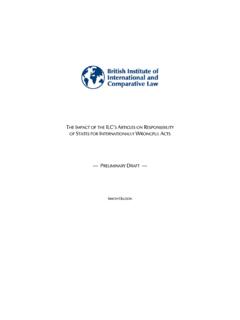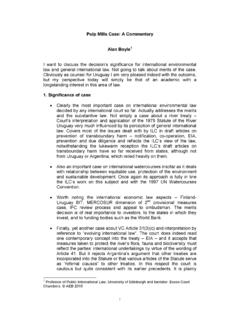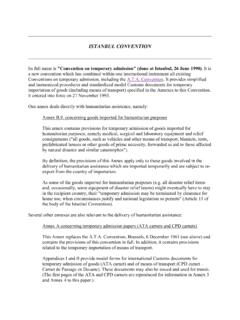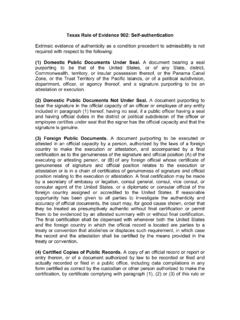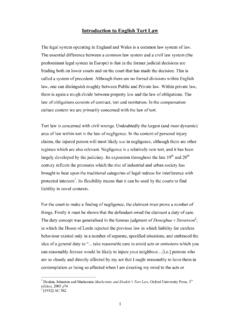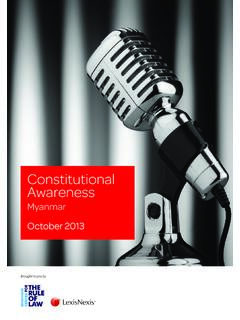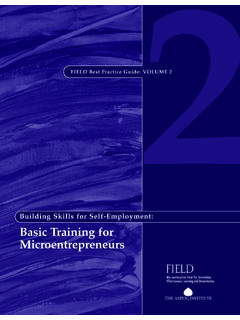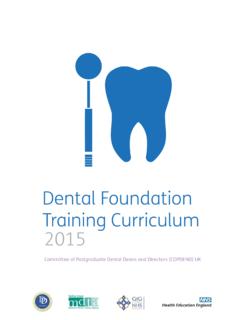Transcription of SKELETON ARGUMENTS: A PRACTITIONERS’ GUIDE
1 Copyright: The Honourable Society of Gray s Inn 2004 1 SKELETON arguments : A PRACTITIONERS GUIDE Over the past few years, we have been fortunate enough to have been able to include among the papers for these training weekends three excellent papers on SKELETON arguments written by Lord Justice Mummery, Mr Justice Hunt and Edmund Lawson , the last of which appended a fictional SKELETON argument demonstrating how to put their tips into practice. With their kind permission, these papers have now been collated by Geraldine Andrews into what we hope will be a comprehensive and easy to follow single paper which combines the judicial perspective with what your leader (if you have one) and your instructing solicitor will expect you to aim to produce. We have also been bold enough to add one or two comments of our own. MICHEL KALLIPETIS GERALDINE ANDREWS August 2004 INTRODUCTION 1. SKELETON arguments are now required on all civil appeals, all administrative court proceedings, at trial in civil cases (opening and closing speeches) and for interlocutory applications.
2 They are often required as a result of orders made at directions hearings, even in criminal cases. Check your practice directions to make sure what is required and what the time limits for service are - in Haggis v DPP ( ) Brooke LJ threatened to make disagreeable orders as to costs for non-compliance. SKELETON arguments are expected for any case involving substantial argument at first instance, and are desirable in every case where substantial argument is anticipated. They are frequently a boon to the judge even when not ordered or required. 2. Sir James Hunt has told us of the (unattributed) judicial reaction on receiving Copyright: The Honourable Society of Gray s Inn 2004 2a 35 page document which was to the effect This is not a SKELETON , it s a fat stiff . Nor would attribution add to the impact of the remarks of a judge who received a manuscript document covered in coffee seals on the morning of trial and said it was difficult to read, disgusting to touch and impossible to understand.
3 It is worse than no SKELETON at all . 3. Such comments only demonstrate the truisms that a. A SKELETON which on receipt produces an adverse reaction is a negligent own goal. b. A SKELETON which is a lengthy recitation of the whole body of the case will not assist. c. A manuscript SKELETON handed to the judge on the day of trial does not have the same effect as that presented to him with the case papers earlier in the week. d. Presentation matters enormously. WHAT IS THE PURPOSE OF A SKELETON ARGUMENT? 4. Advocacy is the art of persuasion through communication. The increased use of written advocacy is not, as some claim, the death of oral advocacy. A carefully drafted written submission can, when skilfully used at the oral hearing, enhance the impact of argument. Even critics of written advocacy recognise that, at the very least, the use of a SKELETON argument allows the advocate two shots at persuading the court of his case. It is the golden opportunity for you, the advocate, to persuade the judge of the merits of your case even before you open your mouth.
4 Ideally you should aim to produce a carefully crafted instrument of persuasion designed to inform, educate, elucidate and persuade the court both in advance of and in conjunction with your oral argument. 5. On that approach the written submission should not be a. a US type court brief; Copyright: The Honourable Society of Gray s Inn 2004 3b. a script for a lecture to a class of first (or last) year law students; c. a professorial style commentary on the strengths and weaknesses of the case; d. an impassioned speech to constituents or to the House of Commons; e. an introductory warm-up to a group therapy discussion or TV chat show; f. the first draft of a Law Review article; g. private shorthand jottings of points intelligible only to the writer. 6. To be effective, the submission should provide the court with a reasoned justification for finding in your favour. The judgment of the court will have to do that, if you are going to win. Why not perform that task for the court by producing a persuasive document with the qualities of a good judgment?
5 7. In short, your SKELETON can be used as an implement of decision. That is what you should be aiming to achieve. The court, not the client or the solicitor or your opponent or you, is the consumer (though a well-crafted SKELETON can often have the bonus effect of persuading your opponent to offer to settle). When drafting a SKELETON it is vital to bear in mind what you want the court to say when it gives judgment. The most flattering judgments incorporate half the SKELETON . 8. Needless to say, in any SKELETON it is vital to give the judge the issue, to pose the question(s) he must answer. Above all it should give him the answer. PREPARATION and PLANNING Cases are won at chambers (Lord Bowen to his pupil - HH Asquith) 9. Think out the case on your seat, not on your feet. Perspiration reaps more rewards than inspiration. Read the papers. Master, muster and marshal the main facts. Research law and refine - select relevant and best cases. Always ask yourself whether you need to cite a particular authority, and why.
6 Do not snow the court with all the results of your research or stifle it with unnecessary information. No overload. 10. Do a proper case analysis (work out your battle plan ). Review all the Copyright: The Honourable Society of Gray s Inn 2004 4material. Sort out the good from the bad. Work out the facts you need to prove in order to make good your submissions. Strip your submissions to essentials. Identify the difficulties in your case, and face up to them. 11. Be a FOX and a HEDGEHOG. A FOX knows many things, a HEDGEHOG knows one big thing. The hedgehog wins in the end IF he knows the one big thing which can win the case- the dispositive point. BUT you have to be foxy in searching for that one big thing and in anticipating and answering the points of your foxy (learned) friend. LAYOUT 12. Pleasing plain presentation is essential. The written submission should radiate feel good . 13. Put yourself in the position of the judge. He is the consumer. Make life easy for him.
7 If you are producing a number of documents, ideally you should put them in a ring binder and use dividers with an index ( SKELETON on top, then chronology, schedule of facts if appropriate, dramatis personae, extracts from cases or statutes, etc. etc.) If you are not going to produce the document in a ring-binder, submit it with holes ready-punched, and either stapled in the top left-hand corner or treasury-tagged. 14. Make the document user-friendly: a. Use one side of the page only. SKELETON arguments are impossible to handle and there is no room for notes if they are stapled and both sides of paper are used. b. Use wide margins. Judges like to write notes on SKELETON arguments and you yourself may find it useful to have space to note down your opponent s arguments or points raised by the judge; c. Use big spacing - at least between lines, though you may get away with single spacing for quotations (judges eyesight does not improve with age). d. Use a large font - Times Roman 12 is the minimum, though Hunt J.
8 Copyright: The Honourable Society of Gray s Inn 2004 5prefers size 14 (see c above); e. Paginate it (bottom centre is preferred). f. Number your paragraphs use 1, 2, 3 and (a)(b)(c), NOT , , (some judges find American style numbering irritating and it is apt to cause confusion). g. Use headings (and sub-headings) to introduce topics: start with an Introduction and end with a Conclusion. h. Avoid using footnotes, particularly for submissions. If the point is worth making, it should be in the body of the SKELETON . If it is a side comment, save it for oral argument if you need to make it at all. Footnotes are (just about) permissible for cross-references if putting them in brackets in the body of the document is going to interrupt the flow. 15. Always provide a Chronology in any case in which dates are important - a strike-out for want of prosecution. Keep any Chronology separate. Judges prefer not to have to flick forwards and backwards through the SKELETON argument to remind themselves of key dates.
9 The same applies to a Dramatis Personae where there are numerous main characters . If there are only a handful (say two or three principals), you could devote a short paragraph in the body of the SKELETON to introducing them, or mention them in the course of setting out the facts. 16. Use names or (defined) abbreviations instead of respondent/appellant or claimant/defendant, which change with appeals and can be extremely confusing in multi-party litigation. It also helps everyone, including the Judge, to remember that they are people. Remember, though, to define the labels at the earliest opportunity, First SKELETON Argument of the Defendant ( John Smith ) or, in paragraph 1, this is an appeal by the Defendant, Credit Agricole Indosuez ( CAI ) from the judgment of Mr Justice Jones Once you have settled on a name, keep it consistent throughout the SKELETON argument and don t swap between Claimant and Mr Smith . If you decide to use surnames throughout, Smith and Brown, again be consistent: to call one party Mr whilst using another s surname looks rude.
10 Copyright: The Honourable Society of Gray s Inn 2004 6 17. Avoid lengthy quotations from transcripts or authorities padding out a thin case. Key quotes can be useful otherwise give cross references. 18. Be in a position to offer the judge the disc in Court if he requires it, so that he may take from it the parts of the key judgment(s) he needs or the sections of statute he has to recite. If you have done your work effectively, he may even incorporate the finding you seek from him in his judgment! STRUCTURE AND CONTENT 19. Heading SKELETON argument on behalf " Three vital words which are often omitted. It is rather important for the court to know whose SKELETON it is, and it is not always immediately apparent from the text. If this is a case in which it is likely that several SKELETON arguments will be submitted, number them: First SKELETON Argument of the Defendant ( John Brown ). In that way, the judge can keep the skeletons in date order and immediately find the one he wants to look at.
